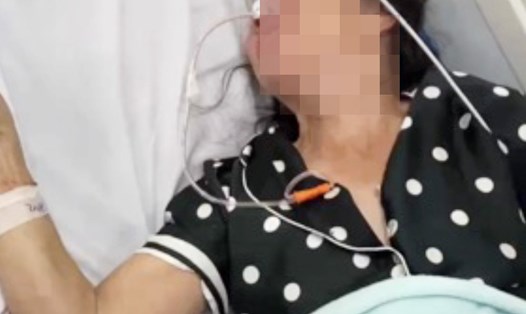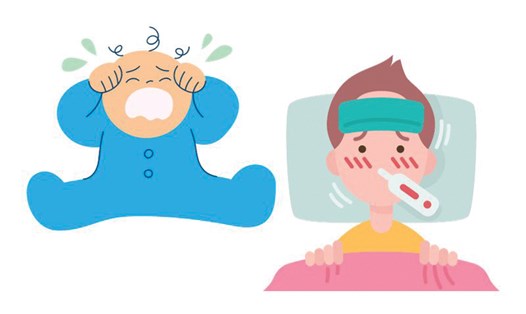Originally a healthy young girl, about 2 weeks before being admitted to the hospital for treatment, female patient T.H.N.Y (20 years old in Cam Le, Da Nang) showed signs of mental disorder and delirium, so her family took her to a mental hospital for examination.
After 6 days of outpatient psychiatric treatment, the patient began to experience seizures in the hands and face lasting about 30 seconds each time, with a frequency of several minutes to several hours. The patient was immediately hospitalized for treatment.
After 3 days of treatment, the patient's condition did not improve, consciousness was slower, and seizures still occurred frequently, so he was transferred to the city general hospital for treatment.
Here, the patient was diagnosed with encephalitis. The results of the brain MRI showed brain damage. The patient was monitored for treatment of viral encephalitis. After 3 days of treatment, the patient's condition did not change.
The patient was transferred to the Emergency Department of the Central Hospital for Tropical Diseases. Upon admission, the patient was in a state of mental disorder, screaming, not responding to calls, and had more convulsions in the face, hands, and right side of the body. The patient was indicated for monitoring of autoimmune encephalitis immediately upon admission.
Dr. Pham Thanh Bang (Emergency Department) said: “The patient was tested for autoimmune encephalitis, viral encephalitis and started treatment for autoimmune encephalitis with a high-dose corticosteroid regimen and anti-epileptic drugs. After 4 days, the patient had results confirming autoimmune encephalitis.
Abdominal ultrasound detected an ovarian tumor measuring 4 x 10cm. The patient was consulted by an obstetrician to have the tumor removed. When surgery was performed, the tumor was actually quite large, measuring 20 x 20cm. This was the source of autoimmune encephalitis.
After removing the ovarian tumor and plasmapheresis, the patient stopped having seizures, no longer had the urge to scream, and her consciousness improved but not much.
Doctor Bang analyzed: The initial symptoms of autoimmune encephalitis are easily confused with the manifestations of depression and autism. When the disease is not detected early, the risk of brain damage will be higher, and the sequelae left after treatment will be very severe. The sequelae of autoimmune encephalitis left after treatment depend on the level of brain damage, such as: consciousness not returning to normal, the appearance of seizures or epileptic seizures, and some weak functions.
Autoimmune encephalitis is a rare type of acute encephalitis, caused by the body's immune system producing antibodies against the glutamate receptor in the brain (NMDA- N methyl D aspartate). Autoimmune encephalitis mostly occurs in young, female patients.




